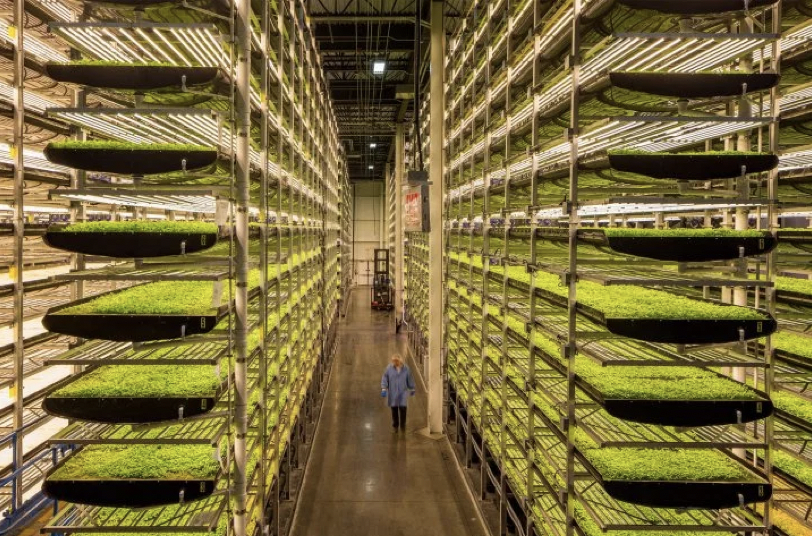Climate Change and AeroFarms
Food is a basic human need, and in an ideal world, everyone would have equal access to healthy, inexpensive, and fresh goods. Unfortunately, this is not the reality for hundreds of millions across the world. Food insecurity, defined as the state of being without reliable access to a sufficient quantity of affordable, nutritious food, is faced every single day by men, women, and children. This number is also likely to increase in upcoming decades due to the negative impact of climate change on natural farming. Clearly there is a growing crisis over if there will be enough food for a prosperous future. Vertical farms known as AeroFarms provide a potential solution to the food crisis across the whole planet.
AeroFarming, first developed by the company with the same name, is essentially a vertical, low-water method of farming on an industrial level within a confined space. Because these farms can be vertical, they take up far less space, making them possible even within cities. This mitigates both the cost of maintaining actual land and also softens transport costs. It also has another major benefit; water efficiency. AeroFarms use only 20% of the water used in traditional farming. This is done by instead of directly watering the plants, using water vapor mixed with other important minerals to directly feed the plants. There is no waste from this process, as any vapor that is not consumed by the plant is reabsorbed back into the feeding cycle. The production of these farms is not just equal, it is in fact higher than traditional farms on a per/plant basis. Due to the compactness, high production, and lower water consumption, AeroFarms pose a solution to a global crisis, for now, and into the future.









